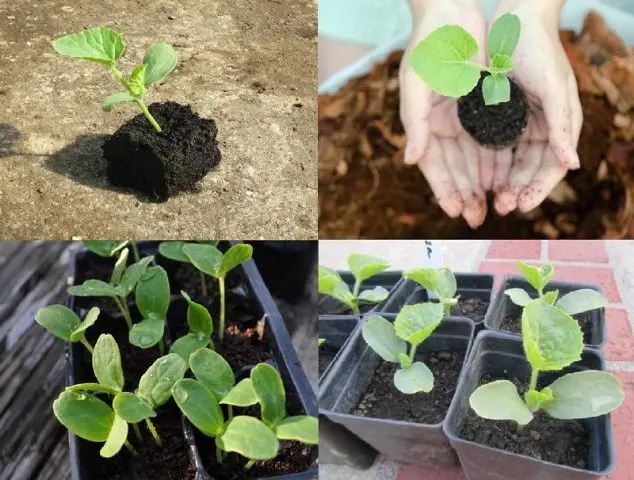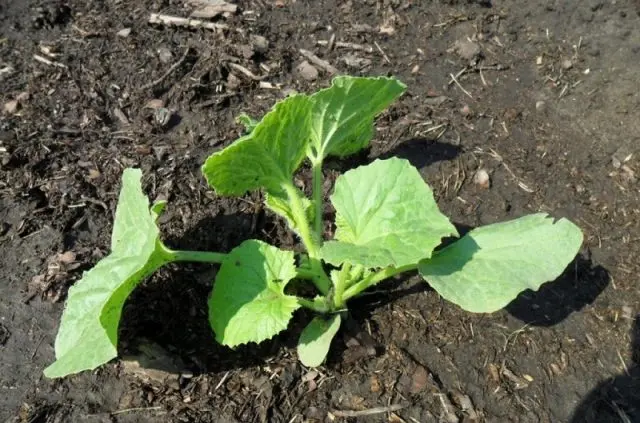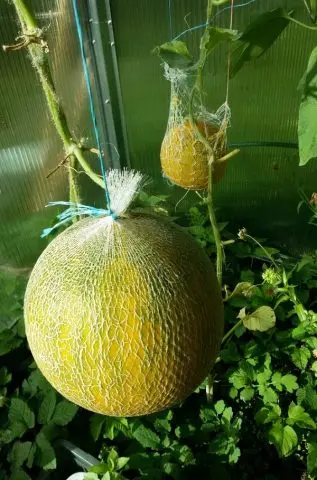Contents
Reading and viewing reviews of the Passport F1 melon, most gardeners set out to plant this particular variety on their site. The popularity of the hybrid is due to the large number of positive reviews about Passport melon.

Description of melon Passport F1
The appearance of the hybrid was facilitated by the scientific work of the breeders of the American company HOLLAR SEEDS, which began at the beginning of this century (2000). Conducting test cultivations showed the viability of the Passport F1 melon hybrid, and already in January 2002 an application was submitted to the State Variety Commission of the Federation.
The characteristics stated in the letter were noted by specialists, and after 2 years the Passport F1 melon took its rightful place in the Register of Approved Seeds. The hybrid is zoned in the North Caucasus region.
Melon Passport F1 is an early maturing hybrid with a growing season of 55 to 75 days. During this time, the plant is able to form thick lashes with green, slightly dissected leaf plates of medium size.
A large number of female flowers are tied on long lashes, from which rounded fruits are subsequently formed. The surface of the melon Passport has a smooth structure with a clearly defined presence of a continuous grid, there is no pattern on the surface of the “false berry”, and yellow colors with green tints predominate.
The average size of the seed nest determines the large amount of juicy and tender cream-colored pulp. When the fruit is cut, the color of the pulp, which is tightly attached to the bark, has a green tint. The skin (or bark) of a melon Passport F1 is not very thick, more falling under the definition of “medium”.
The hybrid is very productive, since fruits can form in 85% of the total number of ovaries. “False berry”, depending on the region and growing conditions, can reach a weight of up to 3 kg.
When grown in rainfed agriculture (cultivation with insufficient watering) from 10 m2 you can get 18 kg of tasty and fragrant fruits. Growing melon Passport F1 using irrigation technique, yield on the same 10 m2 will be up to 40 kg.
Melon hybrid Passport F1 has high taste qualities. The use of fruits is possible both in fresh and processed form. From the fragrant pulp of the Passport melon, delicious desserts are obtained:
- cocktails;
- smoothies;
- fruit salads;
- ice cream;
- jam;
- candied fruit;
- jams.

Pros and cons of the variety
Melon hybrid Passport F1 has gained great popularity for the presence of many positive qualities:
- Early maturity.
- Productivity.
- Unpretentiousness.
- Versatility of use.
- Taste qualities.
- Resistant to most fungal diseases.
Most gardeners consider the short shelf life of mature fruits, no more than 7 days after harvest, and the inability to collect their own seeds to be the shortcomings of this hybrid.
Melon Passport is a hybrid of the first generation. When collecting seeds for planting next season, you should not expect the same fruit in the second generation. Large, but only male flowers will appear on the lashes.
Cultivation of melon Passport
You can grow a melon Passport F1 in 2 ways:
- Landing in open ground.
- Growing fruits in greenhouses and greenhouses.
Melon can be grown both in seedlings and in seedlings. All steps required to prepare the seeds will be identical for both options.
Preparation of seedlings
In order to prepare for planting seedlings, you must perform several sequential steps:
- Acquisition of planting material (seeds) and universal earthen substrate.
- Soaking melon seeds in a solution of epin or zircon – 2 drops of the drug per 100 ml of water. Seeds are in solution for at least 4 hours.
- Placement of seeds for spitting. This process is carried out using moistened gauze, on one part of which the seeds are laid out, and the other part is covered.
- Preparation and processing of containers for growing. At this stage, the containers are treated with a strong solution of potassium permanganate.
Having completed all the steps in sequence, in the third decade of April, you can start planting melon seeds for seedlings.
When planting, melon seeds must be deepened 2 cm into the soil substrate. No more than 3 seeds are placed in one container, after which watering is carried out.
After planting, it is necessary to sprinkle the soil with sand from above – this will avoid infection with the black leg in the future.
Containers with future sprouts are placed on a common pallet, with the help of which subsequent watering will be carried out.
Having covered the containers on top with plastic wrap or glass, the pallet must be placed in a warm place. When the first shoots appear, seedlings need a lot of light and heat. The best option would be to place the containers on the windowsills of the southern windows. Covering material must be removed.

Subsequent care of seedlings will not be difficult and will not take much time. Following the step-by-step instructions, you can get strong and healthy seedlings:
- Only one seedling should be left in each container. The other two are removed by cutting to the very root.
- When the first true leaf appears, watering is carried out with warm, settled water in the pan. The sprouts are still very tender and direct contact with moisture is contraindicated for them.
- After the appearance of 3 pairs of true leaves, it is necessary to pinch the top of the seedling – this will give an incentive for the development of side shoots.
- It is necessary to feed seedlings before transplanting to a permanent place twice. For this, complex mineral or specialized fertilizers for seedlings are suitable.
- Every 3-4 days it is necessary to loosen the top layer of soil.
- 2 weeks before transplanting, melon seedlings Passport must undergo a hardening procedure. During the week, it will be enough to open the window for cold air access, and then you can take the containers out into the open air. To begin with, for 6 hours, with each subsequent day increasing the time spent by seedlings on the street by 1 hour.
Carrying out all the actions will allow by the end of May to begin transplanting the annual melon seedlings, on which 6 true leaves will already appear, in open ground or in a greenhouse.
Selection and preparation of the landing site
Land for planting melons The passport must be prepared in the fall. Important landing site preparation procedures:
- Digging the soil on a shovel bayonet.
- Removal of weeds and fallen leaves.
- Adding humus or manure – up to 5 kg per 1 m2.
- Sowing green manure grasses – mustard, oats, vetch, lupine.
The best place in the melon garden will be the areas where plantings were planted last season:
- Luke;
- garlic;
- cabbage;
- legumes – peas, beans, beans;
- corn;
- spicy and medicinal herbs;
- radish and daikon.
In early spring, it is necessary to dig up the site, with the obligatory embedding of green manure seedlings into the ground. The beds are formed in the form of mounds of slides with a mandatory distance of 80 cm between them. After the beds are formed, you need to cover them with non-woven material for better heating.
Rules of landing
The best way to plant Passport melon in open ground conditions is to arrange the sprouts in one line at a distance of 100 cm from each other. This arrangement will allow in the future to develop a good root system.

When planting seedlings of melon Passport in a greenhouse for 1 m2 2 seedlings will need to be planted.
The most important criterion for the correct planting of seedlings of melon Passport will be the elevation of the root collar by 7 cm from the ground level.
Watering and top dressing
Melon requires frequent watering only during the growth of green lashes. Watering should be carried out only with warm water strictly under the root. Moisture on the lashes and leaves can cause the appearance of fungal diseases.
It is necessary to feed the plant every 14 days. For the preparation of fertilizers, it is necessary to add and dilute in 10 liters of water:
- ammonium nitrate – 25 g;
- superphosphate – 50 g;
- potassium sulfate – 15 g.
For the entire growing season, melon seedlings will need 3 top dressings with a solution of potassium monophosphate (15 g of the drug per 10 liters of water). This will improve the taste and increase the content of sugars in the fruits.
Formation
Depending on the place where the melon is grown, the formation of lashes will also take place.
When planting seedlings in a greenhouse, a maximum of two stems should be left, while all emerging stepsons below 50 cm from the ground should be removed. Shoots that begin to appear above the 50 cm mark must be pinched. An important condition for the successful cultivation of melons in a greenhouse will be the equipment of trellises that will hold the lashes during the beginning of the formation of fruit ripening.
Ripening melon fruits can break the lashes, and therefore many gardeners use the method of growing in nets. In the photo you can see this method more closely. Necessarily mesh bags must be tied to the rungs of the greenhouse. This will protect the melon stalks from damage.

When growing melons in open ground, the formation of stems is not required. If, during the appearance of peduncles, no more than 5 flowers are left on the lashes, then subsequently the fruits will be more weighty. The use of this method, judging by the reviews of gardeners, made it possible to obtain a melon weighing up to 4 kg.
Harvesting
Full ripening of the first fruits occurs towards the end of July or the beginning of August. The duration of fruiting at the Passport melon is possible until the end of September, subject to stable and warm weather.
Diseases and pests
Melon Passport F1 is resistant to many fungal diseases, including Fusarium wilt and anthracnose. If any foci of fungal infections occur, a solution of potassium permanganate will come to the aid of the gardener. To prepare it, you will need 1,5 g of the drug and a bucket of water at room temperature. Before processing, it is necessary to remove the affected leaf plates.
The most common pests that can harm melon seedlings are:
- melon fly;
- melon aphid;
- spider mite.
For pest control, it is best to use insecticidal preparations. Aktara, Konfidor, Aktellik, Mospilan, Talstar are the most popular drugs among gardeners.
Reviews about melon Passport
Conclusion
Numerous reviews of melon Passport F1 allow us to say with confidence that the popularity of the variety is gaining momentum not only in the southern latitudes, but also in the regions of risky farming. And this is possible only due to the early ripening period, and there is no need to talk about the taste and versatility of use. If there is an opportunity and desire, then it is better to grow a melon yourself and check everything on your own experience.









